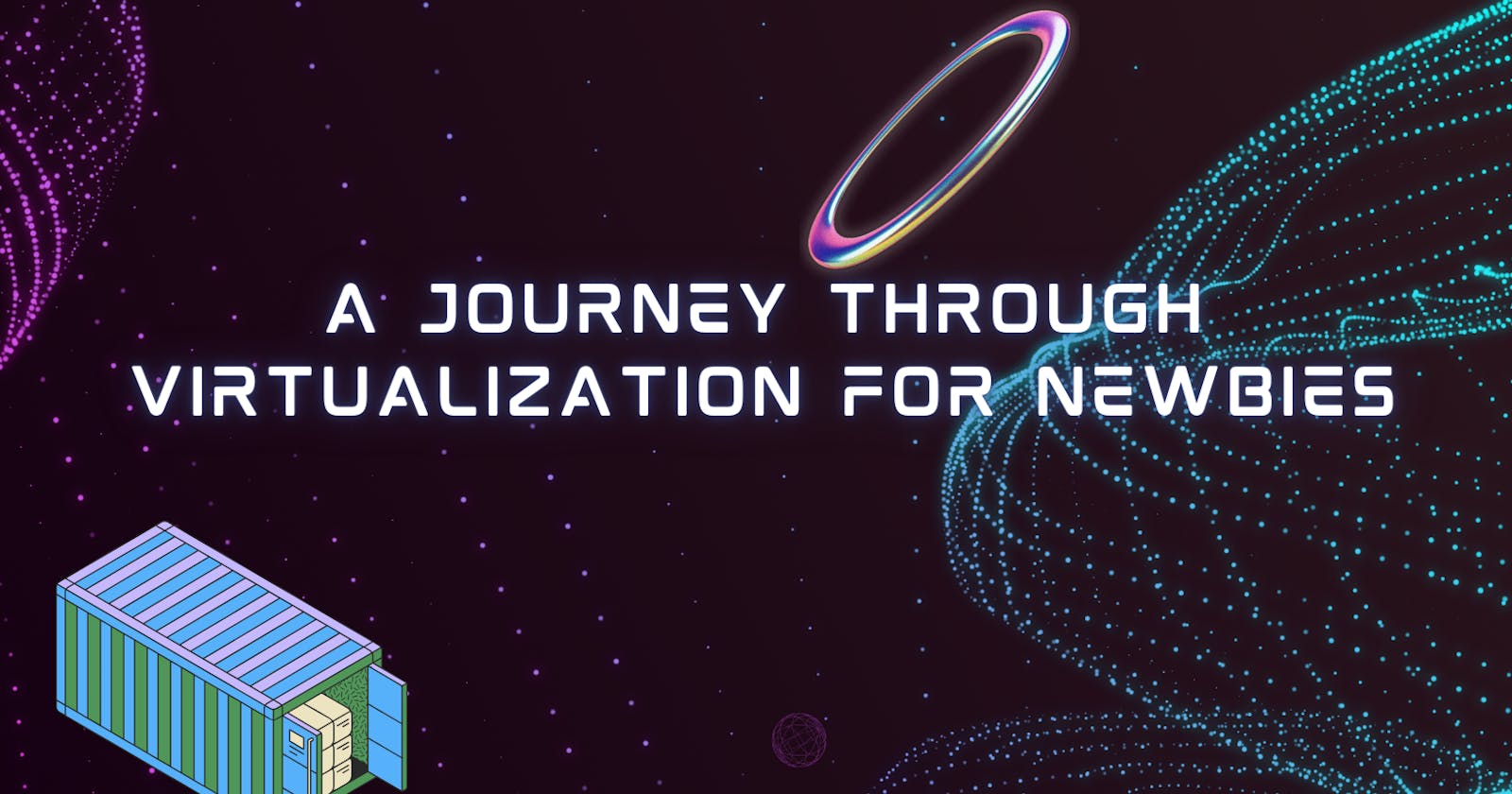My new year's resolution for 2024 when it comes to writing is to make what I write imaginative and able to paint vivid and memorable pictures in a reader's mind. Considering that, let's talk about virtualization.
Ever wondered why your computer is more than just a collection of tricks? Let's dig in and find out the secrets of how your computer is able to do more with virtualization. No need for jargon – as a high-level concept, virtualization is like your computer’s superhero power to be in multiple places at once. In this article, we'll be breaking down this tech buzzword so you can see how it fits into the entire scheme of things when it comes to computing. Without any further long talk, let's start exploring the world where your computer is a superhero, making your digital life smoother than ever and giving you more power! We will begin with an introductory history by answering the big question of what virtualization is.
What is Virtualization?
Let's nail this question with a pizza 🍕 analogy. Imagine your computer as a pizza, and virtualization is the slicer that turns it into perfectly shareable slices. Virtualization is like the master chef's trick to cut up your computer into smaller, manageable bits called virtual machines (VMs). It's all about getting the most out of your computer – sharing the cheese, sauce, and crust without anyone hogging the whole pizza. So, instead of one person having the whole pizza, we can have different folks enjoying their slices, all from the same pizza. Virtualization basically lets your computer multitask like a champ, making the most of its hardware without anyone going hungry. Simple, right? That's virtualization – your computer's pizza party planner! 🍕✨. To make sure we are all on the same page, the term "Virtual" means a computer-generated or replicated version of a real thing.

A fun fact before we continue is that you can virtualize almost every part of IT infrastructure, from servers and workstations to networks, and even disk storage. Isn't that cool? Before we touch on any other thing, it is important that we touch on why Virtualization is important and look at the problems the technology solves.
Why Virtualization?
As with every other thing in life, it is always important to understand why you are doing it. With that in mind, let's now examine why Virtualization in important in the world of computing.
Permit me to take you back as I do so well 😉 (pardon me for tooting my own horn). In the early days of computing, every computer was like a lone ranger, capable of handling just one task at a time. This posed two main challenges: inefficient resource use and a space constraints. Computers were powerful but underutilized, much like having a superhero who hardly fought crime. Moreover, each distinct task required its own dedicated computer, leading to a room full of machines for different jobs, resembling the chaos of having separate kitchens for cooking different types of meals. Virtualization – the technological game-changer ingeniously allowed a single computer to handle multiple tasks simultaneously, addressing both resource wastage and space constraints. Virtualization became the superhero cape that transformed computers into efficient multitaskers, simplifying our tech landscape by making optimal use of resources and consolidating tasks onto a single machine. That's why virtualization emerged as a pivotal advancement in the world of technology! Let's switch gears to a high-level examination of the different categories of virtualization.
Categories of Virtualization
There are several categories or levels of virtualization, each addressing different aspects of computing resources. These levels address various aspects of computing infrastructure, offering efficiency, flexibility, and scalability in different dimensions. Depending on the specific needs of an organization or individual use case, one or more types of virtualization may be implemented to optimize resource utilization and streamline IT operations. Here are the main categories of virtualization each with a brief overview of what it is about.
Server Virtualization: This type involves dividing a physical server into multiple virtual servers. Each virtual server operates independently, running its own operating system and applications. Server virtualization helps maximize server efficiency and resource utilization.
Network Virtualization: Network virtualization creates multiple virtual networks on a single physical network infrastructure. It enables the segmentation of a network, allowing different applications or departments to have their own virtual network without physical changes to the underlying infrastructure.
Storage Virtualization: Storage virtualization abstracts physical storage devices and combines them into a single virtual storage pool. This allows for more efficient management of storage resources, improved data mobility, and simplified storage administration.
Desktop Virtualization (VDI - Virtual Desktop Infrastructure): Desktop virtualization involves creating virtual desktops on a central server. Users can access these virtual desktops remotely, allowing for a more flexible and centralized management of desktop environments.
Application Virtualization: Application virtualization decouples applications from the underlying operating system, allowing them to run in isolated environments. This simplifies application deployment, enhances compatibility, and improves system stability.
Hardware Virtualization: Hardware virtualization, often associated with hypervisors, enables the creation of virtual machines (VMs) on a physical server. It allows multiple operating systems to run on the same hardware simultaneously, providing isolation between VMs.
With the different levels or categories out of the way, let's take a look at hypervisors AKA virtual machine managers.
Hypervisors
A hypervisor, also known as a virtual machine manager, is software that creates and/or runs VMs. I'll go straight to telling you that there are two types of hypervisors -Type 1 and Type 2 hypervisors.
Type 1 Hypervisor (Native or Bare-Metal)
Type 1 hypervisors are like the main event organizers. They work or run directly on the computer's hardware and does not require an underlying OS to be present reason why we call them bare-metal because there’s nothing between them and a computer's hardware. Examples include VMware ESXi, Microsoft Hyper-V Server, and KVM.
Type 2 Hypervisor (Hosted)
They are also known as hosted or Host OS hypervisors and run as applications on a conventional OS. They run on top of your regular OS, managing both everyday tasks and virtual machines. Examples include Oracle VirtualBox, VMware Workstation, and Parallels Desktop.
Advantages of Virtualization
The only way to end this article on a positive note is to look at some of the pros of using virtualization.
Virtualization ensures your computer's powers are used wisely, preventing waste and making tasks run smoother.
Virtualization provides a sandbox for software testing, letting you experiment without messing up your actual system.
It adds an extra layer of security, keeping your virtual machines isolated and making it harder for digital bad actors to cause trouble.
Virtualization adapts to changing needs, easily accommodating growth or reduction in computing requirements.
Virtualization facilitates quicker recovery from mishaps by swiftly restoring virtual machines, acting as a reliable backup.
Conclusion
With this article, we have seen the cost-effectiveness and technical efficiency that virtualization brings to the table. It's not just about making computers work; it's about making them work smarter. From optimizing resources to providing a secure and flexible environment, virtualization is the powerful force driving how companies and computing professionals around the world use their IT resources. In a world where every bit matters, virtualization stands as the leader continuously guiding us toward a future where technology is not just a tool but a strategic partner in our journey forward. Here's to a virtual tomorrow, where the only limit is the boundless potential of our imagination. 🚀💻✨

